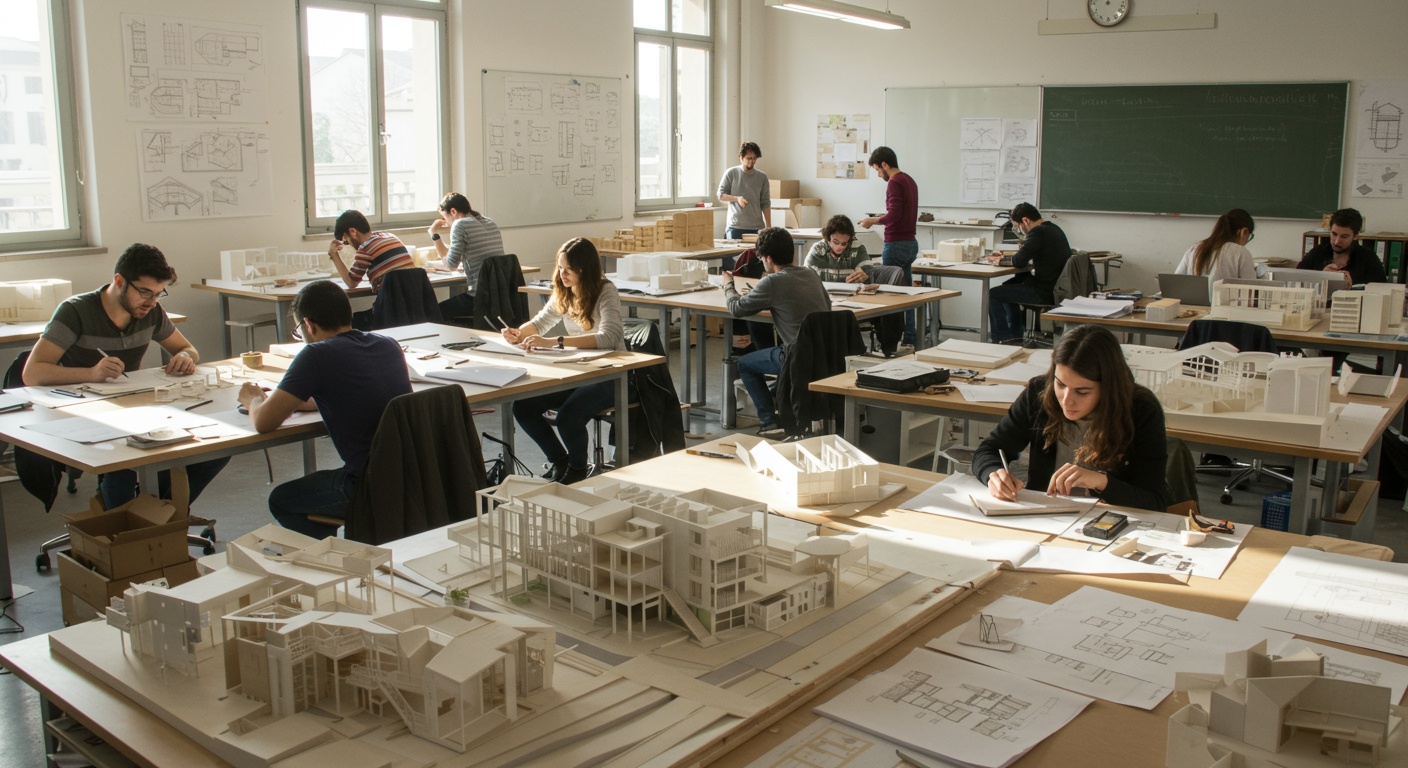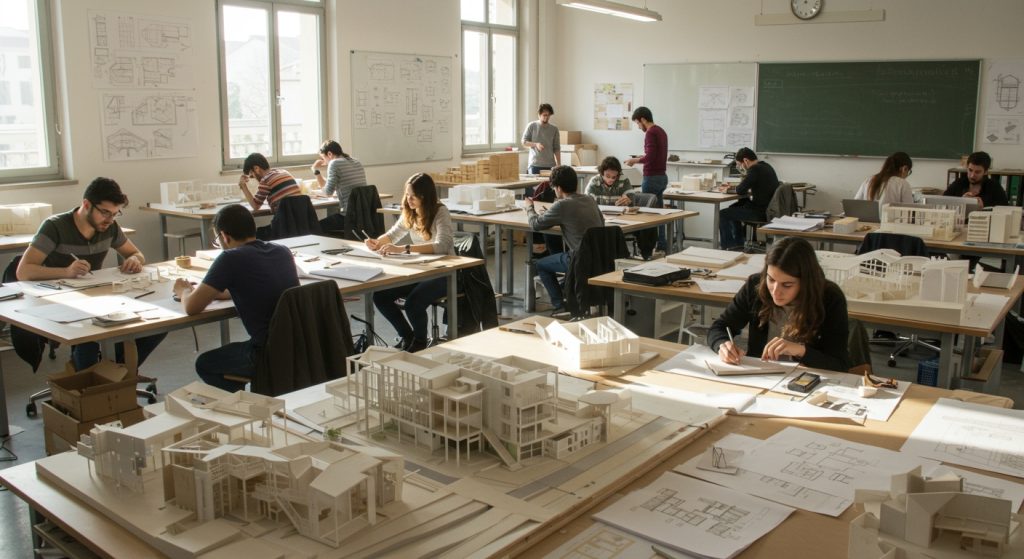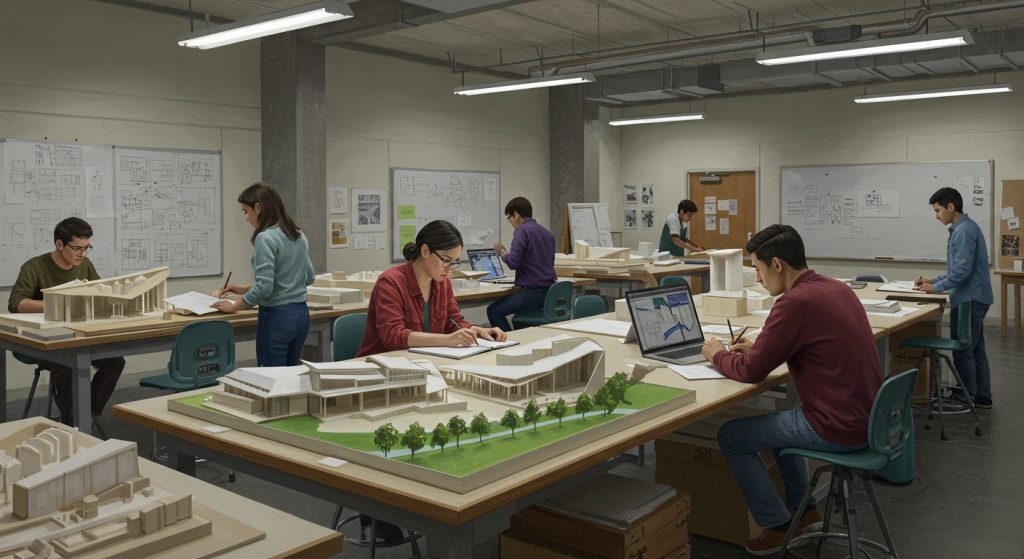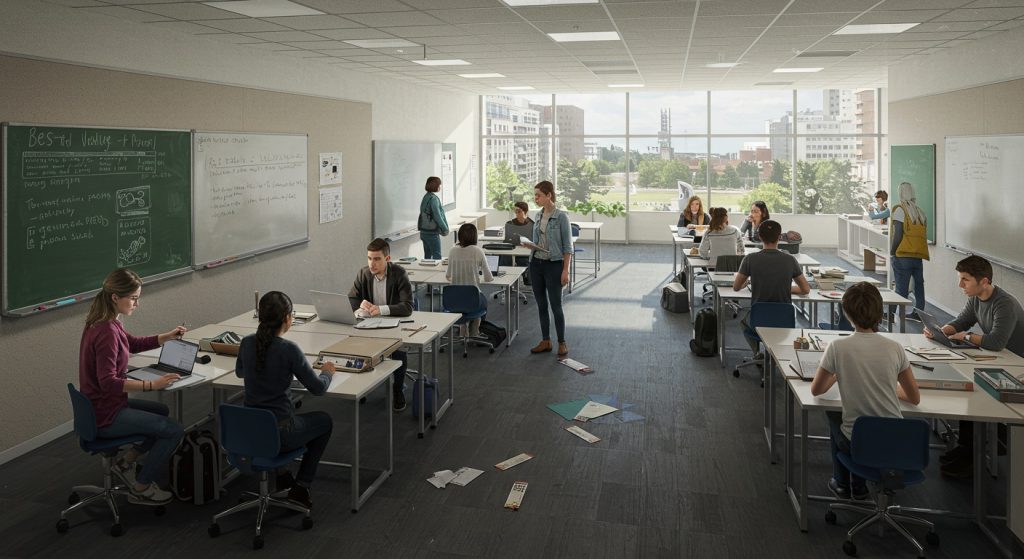Italian architectural education, steeped in history yet constantly evolving, faces the challenge of balancing preservation with innovation. Today’s design studios are grappling with sustainable urban development and adaptive reuse, pushing students to reimagine historical contexts within modern frameworks. We explore how leading institutions like the Politecnico di Milano and IUAV University of Venice are fostering excellence through project-based learning, emphasizing hands-on experience in restoration and parametric design. Discover how these universities are responding to the demands of a globalized profession, equipping graduates with the skills to address pressing issues like climate change and social equity through thoughtful, context-aware architecture.

A Legacy of Design: Historical Context
Italian universities, steeped in history, haven’t always prioritized modern architectural design. For centuries, the focus was on preserving existing structures, often adapting palazzi and monasteries for academic use. This resulted in a charming but sometimes functionally challenging environment. But, the latter half of the 20th century and the dawn of the 21st witnessed a shift. A growing recognition of the impact of the built environment on learning, innovation. Student well-being fueled a wave of architectural advancements. This transformation involved not only new constructions but also sensitive renovations that respected historical contexts while incorporating contemporary design principles. Think of the University of Bologna, one of the oldest universities in the world. While preserving its ancient core, it has expanded with modern facilities designed to foster collaboration and cutting-edge research. This delicate balancing act between history and modernity is a defining characteristic of architectural design excellence in Italian universities.
Key Design Principles Guiding Innovation
Several core principles underpin the current wave of architectural innovation within Italian universities:
- Sustainability: A strong emphasis on environmentally responsible design. This includes the use of sustainable materials, energy-efficient systems. Strategies for reducing the building’s carbon footprint.
- Flexibility and Adaptability: Spaces are designed to be easily reconfigured to accommodate changing pedagogical needs and research methodologies. This is crucial in a rapidly evolving academic landscape.
- Collaboration and Interaction: Architecture is used to foster collaboration among students, faculty. Researchers. This is achieved through open-plan layouts, communal spaces. Strategically placed interaction zones.
- Integration with the Surrounding Environment: New buildings are designed to harmoniously integrate with the existing urban fabric and natural landscape. This often involves careful consideration of scale, materials. Visual impact.
- Accessibility and Inclusivity: Universal design principles are applied to ensure that all spaces are accessible to individuals with disabilities. This includes ramps, elevators, accessible restrooms. Assistive technology.
- Aesthetics and Well-being: The creation of aesthetically pleasing and stimulating environments is recognized as crucial for promoting student and faculty well-being. This involves careful consideration of natural light, ventilation, acoustics. Visual comfort.
Materials and Technologies: A Modern Palette
The selection of materials and technologies plays a pivotal role in achieving architectural design excellence. Italian universities are increasingly embracing sustainable and innovative solutions. Common materials include:
- Locally Sourced Natural Stone: Reflecting regional architectural traditions and reducing transportation costs.
- Timber: Used for structural elements, cladding. Interior finishes, offering a warm and sustainable alternative to concrete and steel.
- Recycled Materials: Concrete aggregates, glass. Plastic are incorporated into building components, minimizing waste and promoting circular economy principles.
- High-Performance Glass: Used to maximize natural light while minimizing heat gain and glare.
- Photovoltaic Panels: Integrated into building facades and roofs to generate renewable energy.
Technological advancements impacting design include:
- Building insights Modeling (BIM): A digital representation of a building’s physical and functional characteristics. BIM enables architects, engineers. Contractors to collaborate more effectively, optimize designs. Manage construction processes.
- Computational Design: Algorithms and parametric modeling tools are used to generate complex geometries and optimize building performance.
- Smart Building Technologies: Sensors, actuators. Control systems are integrated into buildings to monitor and optimize energy consumption, indoor air quality. Occupant comfort.
Case Studies: Showcasing Architectural Innovation
Let’s examine a few hypothetical (but representative) examples to illustrate the practical application of these principles: Case Study 1: The “Sustainable Science Hub” at a Northern Italian University This hypothetical project involves the construction of a new science building on a campus known for its commitment to environmental sustainability. The building features:
- A timber frame structure with locally sourced wood.
- A green roof with native plant species to reduce stormwater runoff and provide insulation.
- A high-performance facade with integrated photovoltaic panels.
- A geothermal heating and cooling system.
- Laboratories designed with flexible layouts to accommodate evolving research needs.
The design also prioritizes collaboration, with open-plan research spaces, communal areas. Strategically located coffee stations to encourage interaction among researchers. Case Study 2: The “Innovation Center” at a Central Italian University This project focuses on repurposing an existing historical building into a state-of-the-art innovation center. The design approach involves:
- Careful restoration of the building’s historical facade.
- Installation of a modern glass atrium to bring natural light into the interior.
- Creation of flexible co-working spaces with modular furniture.
- Integration of smart building technologies to optimize energy consumption and indoor air quality.
- Accessibility upgrades to ensure that all spaces are accessible to individuals with disabilities.
The innovation center serves as a hub for entrepreneurship and collaboration, connecting students, faculty. Local businesses.
Comparing Approaches: Renovation vs. New Construction
Italian universities face a unique challenge: balancing the need for modern facilities with the desire to preserve their historical heritage. This often leads to a choice between renovating existing structures and constructing new buildings. Each approach has its own advantages and disadvantages:
| Approach | Advantages | Disadvantages |
|---|---|---|
| Renovation | Preserves historical character, reduces environmental impact (compared to new construction), often less expensive. | Can be challenging to integrate modern technologies and meet accessibility requirements, may have limitations in terms of space and layout. |
| New Construction | Allows for greater design flexibility, can be tailored to specific needs, easier to integrate modern technologies and meet accessibility requirements. | Higher environmental impact, can be more expensive, may disrupt the existing campus fabric. |
The optimal approach depends on the specific context, considering factors such as the condition of the existing building, the program requirements. The available budget.
The Impact on Learning and Research
Architectural design excellence has a profound impact on the learning and research environment within Italian universities. Well-designed spaces can:
- Enhance student engagement and motivation: A stimulating and comfortable learning environment can improve student focus and participation.
- Promote collaboration and innovation: Open-plan layouts and communal spaces can foster interaction and knowledge sharing among students and faculty.
- Improve well-being: Access to natural light, ventilation. Green spaces can reduce stress and improve overall well-being.
- Attract top talent: Modern and well-designed facilities can attract talented students and faculty from around the world.
- Support cutting-edge research: Flexible and adaptable laboratory spaces can accommodate evolving research methodologies and technologies.
In essence, architectural design becomes a strategic tool for enhancing the academic mission of Italian universities, fostering a vibrant and innovative learning community. The principles of sustainable Architecture are key to these improvements.
Challenges and Future Directions
Despite significant progress, challenges remain in achieving architectural design excellence across all Italian universities. Funding constraints, bureaucratic hurdles. A shortage of skilled professionals can hinder innovation. Looking ahead, several trends are likely to shape the future of architectural design in Italian universities:
- Increased focus on sustainability: As concerns about climate change continue to grow, universities will prioritize environmentally responsible design practices.
- Greater use of technology: BIM, computational design. Smart building technologies will become increasingly integrated into the design process.
- Emphasis on user-centered design: Architects will increasingly involve students, faculty. Staff in the design process to ensure that buildings meet their needs.
- Integration of digital technologies: Campuses are evolving into “smart campuses,” integrating digital technologies to enhance learning, research. Campus management.
- Adaptive reuse of existing buildings: Recognizing the value of historical preservation, universities will increasingly focus on creatively repurposing existing structures.
By embracing these trends and overcoming existing challenges, Italian universities can continue to push the boundaries of architectural design and create inspiring learning environments for future generations.
Conclusion
The journey through architectural design excellence in Italian universities reveals a commitment to blending tradition with cutting-edge innovation. We’ve seen how schools like Politecnico di Milano and IUAV University of Venice cultivate environments where creativity flourishes alongside rigorous technical training. My personal insight is that the key to their success lies in the emphasis on hands-on experience, often through collaborative projects with local communities. But, a common pitfall to avoid is solely focusing on aesthetics without considering sustainability and social impact. Best practice dictates a holistic approach, where design solutions address real-world challenges and promote inclusivity. To truly excel, aspiring architects must embrace interdisciplinary collaboration and continuously seek opportunities to learn from diverse perspectives. Remember, the most impactful designs are those that not only captivate the eye but also improve the lives of those who inhabit them. Your passion and dedication will shape the future of architecture, one innovative design at a time.
More Articles
Top Architecture Schools in Italy for Design Innovation
Best Value for Money: Affordable Colleges with Quality Education in Europe
Top Law Schools in Canada for International Students
Leading Universities for Data Science in Germany
FAQs
So, what makes Italian universities stand out when it comes to architecture?
Okay, picture this: Italy’s a living museum, right? That means Italian architecture programs are steeped in history, tradition. A really strong understanding of design principles that have stood the test of time. They tend to emphasize both theory and practical application, plus you’re surrounded by incredible examples of architecture everywhere you look. It’s pretty inspiring!
What kind of architectural styles are they known for focusing on?
Well, given Italy’s long and diverse history, you’ll find a strong focus on classical architecture (think Rome!) , Renaissance, Baroque. More modern interpretations. Different universities may specialize in certain areas, like restoration or sustainable design. It really depends on where you go!
Are these programs mostly taught in Italian? Do I need to be fluent?
That’s a great question! While many programs are taught in Italian, there are definitely an increasing number of architecture programs offered in English, especially at the Master’s level. You should check the specific program requirements. Even if you’re studying in English, learning some Italian will drastically improve your overall experience!
What are some of the top universities for architecture in Italy? Just give me a few names!
Alright, if you want a quick list, check out Politecnico di Milano, Politecnico di Torino. IUAV University of Venice. These are generally considered to be among the best. There are other fantastic schools too. Don’t just focus on rankings, though; look at what each school offers and see if it aligns with your interests.
What kind of career paths can I expect after graduating with an architecture degree from an Italian university?
You’ve got options! Obviously, you can become a licensed architect (after completing the necessary exams and professional experience, which vary by country). But you could also work in urban planning, historic preservation, interior design, landscape architecture, or even academic research. The possibilities are pretty broad.
Okay, how difficult is it to get accepted into an architecture program there, compared to, say, the US or UK?
That depends! Entry requirements vary between universities. Generally, you’ll need a strong portfolio demonstrating your design skills, good grades. Potentially an entrance exam, especially for undergraduate programs. Competition can be tough, especially for the top-ranked schools, so make sure your application is polished and showcases your best work!
What’s the deal with student life? Is it all serious studying or is there time to enjoy Italy?
Definitely time to enjoy Italy! While architecture school is demanding anywhere, studying in Italy offers a unique cultural experience. The Italian lifestyle emphasizes balance, so you’ll find plenty of opportunities to explore, eat amazing food. Immerse yourself in the local culture. Plus, you’ll be surrounded by other international students, so you’ll have a built-in support system.



